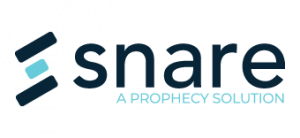Being part of CA Veracode Verified demonstrates commitment to produce secure software
Adelaide, Australia – June 12th, 2018 – Prophecy International today announced that it participates in CA Veracode Verified, a program that validates a company’s secure software development processes. With approximately 30 percent of all breaches occurring as a result of a vulnerability at the application layer, software purchasers are demanding more insight into the security of the software they are buying. CA Veracode Verified empowers Prophecy to demonstrate its commitment to creating secure software.
When purchasing software, customers and prospects are demanding to understand how secure the software is. As part of CA Veracode Verified, Prophecy can now demonstrate through a seal and provide an attestation letter from an industry leader that the application has undergone security testing as part of the development practice. Additionally, participating in the program ensures that our software meets a high standard of application security, reducing risk for the customer.
Organizations that had their secure development practice validated, and their application accepted into the Standard Tier, have demonstrated that the following security gates have been implemented into their software development practice:
- Assesses first-party code with static analysis
- Documents that the application does not allow Very High flaws in first-party code
- Provides developers with remediation guidance when new flaws are introduced
Snare has been solving log monitoring and management problems around the globe for almost 20 years. It is the key piece in successful SIEM deployments from nearly every SIEM vendor and is trusted by private enterprises and government agencies alike for it’s ease of deployment and rock-solid architecture.
“Prophecy is committed to delivering secure code to help organizations reduce the risk of a major security breach. Companies that invest in secure coding processes and follow our protocol for a mature application security program are able to deliver more confidence to customers who deploy their software,” said Asha May, CA Veracode
“As an organization we have always put security first, so this was the next logical step to show our customers just how secure our applications really are and so they can rest easy knowing their security and compliance goals are not jeopardized by our software.” Said Steve Challans, CISO of Prophecy International.
About Prophecy International Holdings Limited
Prophecy International Holding Limited is a listed Australian company (ASX:PRO) that has been operating globally since the 1980s. More recently the focus at Prophecy has been on growing the eMite and Snare lines of business. eMite service intelligence platform combines analytics, correlation, capacity, and performance, availability, and SLA management into a single, out of the box solution to provide customers with real time insight. The Snare product suite is a highly scalable platform of security products designed to find, filter and forward event log data. Snare log sources include Windows, flat files, databases, Linux, Mac and Solaris with coverage for desktops and servers.
Prophecy operates globally from Adelaide and Sydney in Australia, London in the United Kingdom and in Denver, USA.
You can see Prophecy listed in Veracode’s directory here: https://www.veracode.com/verified/directory/prophecy-international

